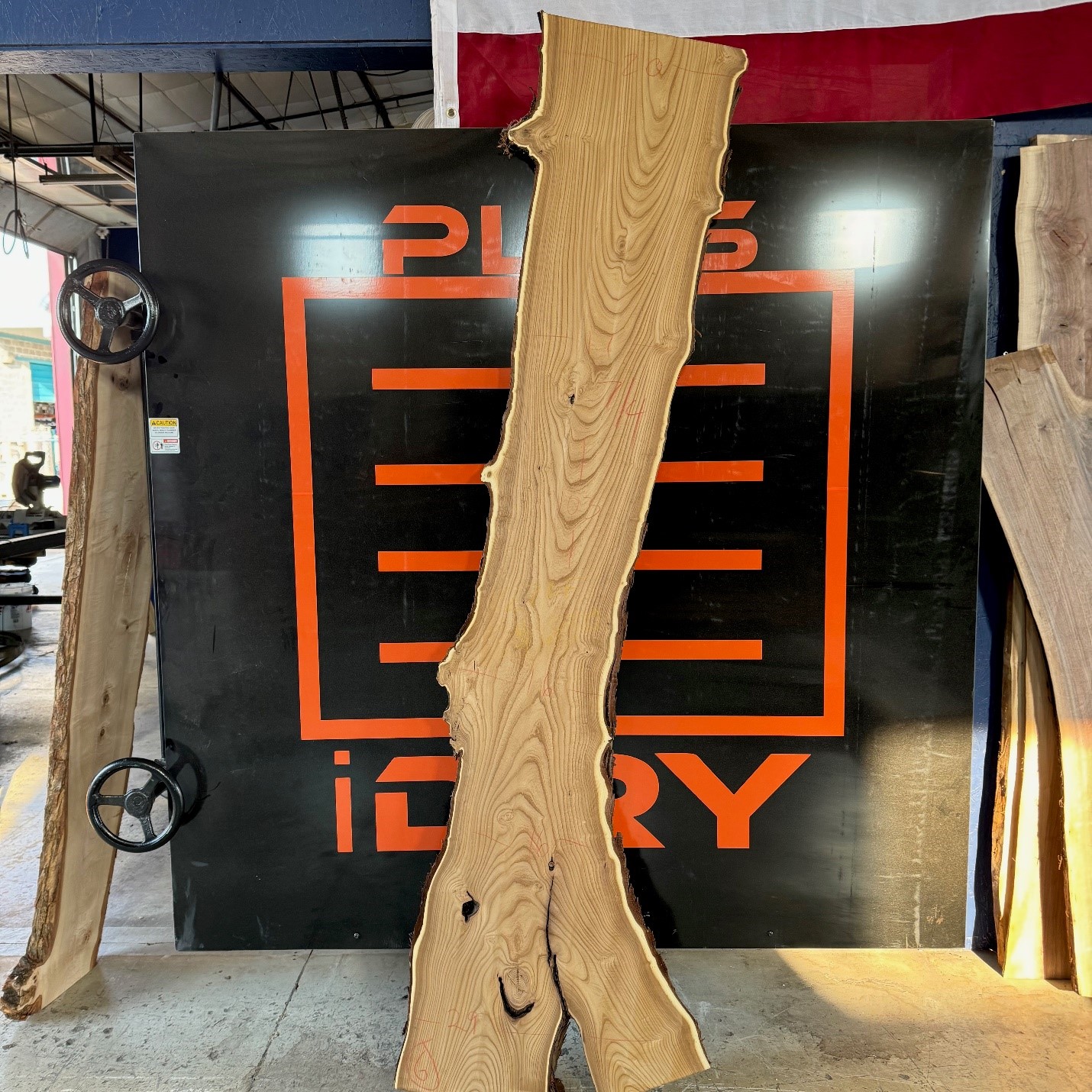
As their name indicates, Russian Olive trees are native to western Asia and Europe, including Russia. The tree wasn’t introduced to the United States until the early 1900s. Unfortunately, the tree was quickly named as an invasive species due to the fact the trees can disrupt waterways and overcrowded native plants.
Despite that fact, Russian Olive wood, especially reclaimed slabs, is a great choice for woodworking projects. This underutilized yet unique material has a popular aesthetic appeal thanks to its dramatic grain patterns. The wood’s color variations make it a popular choice when crafting with wood slabs.
This blog will talk about some of our top wood slab crafting tips when working with Russian Olive wood. We’ll go over some of the basics about the type of wood and what type of projects you should use it in.
Understanding the Characteristics of Russian Olive Wood
A Russian Olive tree is thorny and large, often growing up to 25 feet tall. The thorns can also be quite long, measuring around two inches in length.
The tree also bears flowers that are bell-shaped, yellow, and arranged in clusters. There are also clusters of olive-shaped fruit that each contain a seed. The fruit starts as silver in color before ripening to a brown or tan.
Grain and Color
Russian Olive sapwood starts as a light, yellow-white color. As the tree ages, it can become darker, evolving into a golden brown. Sometimes it can boast a greenish hue.
The grain of a Russian Olive tree is quite different than a true Olive. The grain of a Russian Olive is uneven and very porous. However, some of the things that add to its visual appeal include:
- Irregularities
- Burls
- Knots
Density and Texture
Russian Olive hardwood has a medium density. While it’s on the softer side of wood, it can be flexible and strong. Some people say that its grain is similar to mahogany but has the coloration consistency of walnut.
Using Russian Olive Wood in Woodworking Projects
The uniqueness of Russian Olive Wood makes it sometimes challenging to work with regarding woodworking projects.Some of the advantages of working with this type of wood include:
- Dark hardwood that features rich coloring
- Distinctive grain pattern
- Finished professionally with oil
Like with any type of wood, there are some cons to working with Russian Olive. This might include:
- Can splinter
- Prone to cracking during the drying process
- Not very stable or strong
With these things in mind, Russian Olive wood is best when used in small woodworking projects. Enhancing craftsmanship skills and choosing the right tools will improve your results.
Invest in High-Quality Tools
Russian Olive wood is porous but on the harder side. It also doesn’t dry flat, even when clamped down.
We recommend looking into a professional-grade drum sander if you want to work with Russian Olive wood. Using that type of product will ensure you have a completely flat and true surface.
Common Uses for Russian Olive Wood
As mentioned earlier, Russian Olive is a great type of wood when working on smaller projects. Some of our favorite things to make with this type of wood include:
- Coffee tables
- Side tables
- Decorative items
- Knife handles
- Pens
- Small bowls
- Statues
- Cutting boards
Tips for Safe Handling of Russian Olive Wood
Keeping yourself safe when handling any type of wood is important. Many types of wood can cause allergic reactions when you come in contact with the wood or the sap.
One thing to keep in mind is that Russian Olive wood has very long and sharp thorns. You may be working with a piece of wood that hasn’t been completely milled. That means you need to take extra protection to avoid coming into contact with the thorns.
A few tips to keep in mind when handling this type of wood include:
- Wear pants, long sleeves, and thick gloves
- Use sharp blades and saws to make clean cuts
- Consider wearing a ventilator
Wearing a ventilator may seem like overkill to you, especially if you’re working on a smaller project. Coarse wood dust is created anytime you cut wood. This dust could irritate your skin or lungs when breathed in.
You’ll also want to make sure that your workspace is well-ventilated when you’re sanding or cutting the wood. The air circulation helps clear out the airborne particles after you’re done working with the wood, ensuring you breathe in clear air.
How to Protect Russian Olive Wood
One of the great things about Russian Olive wood is that it easily absorbs oil and all the benefits that substance can provide. You can apply a thin coat of boiled linseed or mineral oil to your finished product. This moisturizes the wood and protects it from external elements.
You may want to consider combining oil with wax. This will provide your project with a more durable finish, depending on what you want to use the item for.
A few things to keep in mind when applying oil to wood include:
- Apply oil in the direction of the wood grain
- Use wax on the product after the oil has completely dried
- Routinely add another layer of oil to prevent cracking and to maintain the wood’s moisture levels
- Use a soft cloth to apply the oil, wiping off any excess after you let it soak in
Are you planning on using your creation in the kitchen and for food preparation? You’ll want to ensure anything you apply to the wood’s surface is food-safe.
Get Expert Woodworking Advice and Quality Slabs From Les Bois Milling
While Russian Olive trees might be considered invasive in parts of the United States, they’re still considered a popular choice for woodworking projects. Learning Russian Olive wood techniques will ensure you produce exceptional results. Working with a reliable company to get the wood you need will also help you create amazing items.
Les Bois Milling is committed to giving wood slabs a second life. We take pride in sourcing the highest quality of wood for our customers, including Russian Olive slabs. Reach out to our office to learn more about our current inventory selection.

